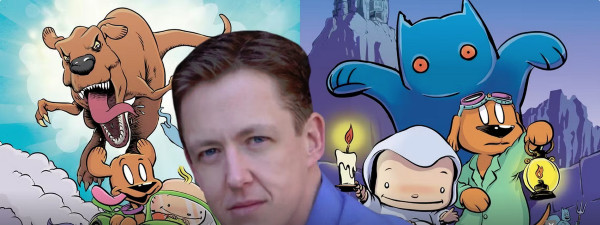Cartoonists on Cartooning
Skip to commentsLinda Finck on Saul Steinberg; Keith Knight on Little Victories; Michael Maslin on Hilary Fitzgerald Campbell; Walter Scott on criticism; Vincent Alexander on Rob Schribner; Brian Anderson on transitioning from comic strips to graphic novels.
It feels wrong to describe Saul Steinberg’s work in words; it simply transcends them. Steinberg called himself “a writer who draws,” perhaps because he didn’t have a language of his own: he disowned his native Romanian when he left for Italy at nineteen, and adopted English when he moved to the United States in his late twenties. But his drawings are absolutely fluent in a way drawings rarely are. Or words, for that matter.


From New York Review of Books: Liana Finck Remembers the Innovative Work of the Iconic “New Yorker” Cartoonist.
In America he re-created himself, and re-created the medium of cartooning: from something parochial—conservatively illustrated one-liners that often aged fast—into something free, proudly individual and endlessly surprising. Jokes were replaced by ideas, elegantly pinned down and illuminated.
From All in Line by Saul Steinberg. Introduction by Liana Finck. Copyright © 2024.
**********
Keith Knight on a cartoonist’s Merry Christmas gift as part of Life’s Little Victories.

You too can brighten a cartoonist’s Christmas.
**********
From Michael Maslin in At Wit’s End about Hilary Fitzgerald Campbell:
She has said in at least one interview that she began writing down her thoughts more post-college “and started attaching them to [her] cartoons.”
In Hilary’s case, the style, to my eyes, looks like very slo-mo animation. There’s movement in those static people – the figures seem to be on the verge of activity. I would argue that is unusual in New Yorker cartoon land.[*]

From The Sonoma Valley Sun:
Sonoma native Hilary Campbell, a cartoonist for the New Yorker magazine whose work is featured in each edition of the Sonoma Valley Sun, is one of the cartoonists featured in a new book just released by Penguin/Randomhouse.
The Sonoma Valley Sun celebrates their homegirl Hilary Fitzgerald Campbell‘s At Wit’s End entry.
Hilary’s cartoons featured in the Sonoma Valley Sun can be seen HERE.
To order At Wit’s End: The Cartoonists of The New Yorker, CLICK HERE.
*edited to correct a misattributed quote in the earlier version. The quote the Sonoma Valley Sun ascribes to Hilary in their article is actually from Michael Maslin.
**********
Cartoonist Walter Scott faces his critics…



in the November issue of Art Review.
**********
“Greatest animator who ever lived” is a daunting title, but if anybody deserves it, it might be Rod Scribner (1910-1976). In the already crazy universe of the Looney Tunes and Merrie Melodies cartoons of the 1940s, Scribner’s animation stands out as the craziest of all. And in today’s world of focus-tested blandness and homogenized AI sludge, watching Scribner’s boldly personal weirdness is a breath of fresh air.

Animator Vincent Alexander‘s appreciation for classic Warner Bros. animator Rod Schribner at Cartoon Brew.
His characters aren’t just rubbery; Scribner contorts their bodies with such exhilaratingly furious vigor that they seem to explode into frenzied hysteria. The characters’ relentless squashing and stretching reveals an unfiltered look at their inner insanity. Every part of this Scribner scene from Birdy and the Beast (1944) is amazing, but pay attention to the propulsive energy with which the cat smashes the food in the dog’s face and hurls his body every which way before zipping off. The flurry of poses move too fast to get a good look at any single drawing, but you can feel every one of them. No real person could move like this, not even a comic strip panel could capture it, it’s just pure animation.
The post includes some great samplings.
**********
Brian Anderson: You’ve obviously seen my bookshelf. I am lucky enough to have my dad’s comic collection from the 1950s. That included the first Peanuts and Pogo collections. Both are next to my drawing table right now. They had a profound effect, not just on my art, but on how I viewed what was possible with comics. I encourage everyone to read the first few years of Peanuts. It is dramatically different from what most of us first encountered in the papers. It was darker, dare I say a bit goth. That underlying depression in Charlie Brown was much more pronounced, and yet it captures your heart.

Brian Cronin interviews Brian Anderson on adapting the Dog Eat Doug comic strip into Sophie graphic novels.
In the daily strip I worked hard so that each strip would make you smile or sometimes feel sad, but I also worked in longer story arcs like Indiana Bones, the Canine Crusader and, eventually, my foster dogs. Switching to graphic novels was freeing in that I got to let the character loose and give them a vast playground. But shaking the four panel rhythm was tricky.


Comments 1
Comments are closed.